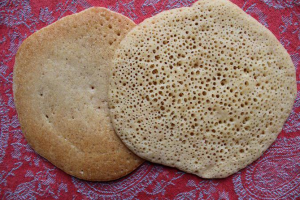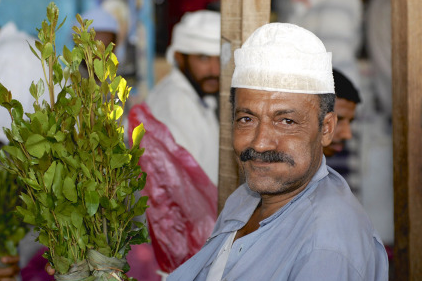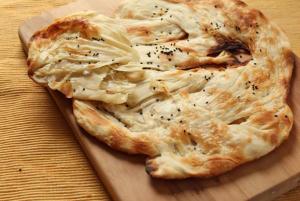This article was written by Roni Cohen and published on FoodFusion and Geopolitics, a recent partner of Young Diplomat. This orginal article explains the geopolitical problems in Yemen , while giving a cooking recipe from the war-torn country. Have a good reading and Bon Appetit!
Yemen
Yemen is located in Southern part of Arabia and boarders Saudi Arabia from the North and Omen to the East. Currently, there is an civil war that seems to never have an ending. In the past few weeks I’ve been thinking about the images of children starving that you often see on Aljazeera and grew curious about food security in Yemen . Not only did I learn about the issue of hunger and food issues in Yemen at the moment but I also learned a lot of interesting history. To begin I will provide a brief history and background about Yemen. Starting with the Ottoman and British Empires who sought trade routes during their rule. Both Empire’s had individual struggles due to cultural differences.
Ottoman Empire
The Ottoman’s reached Yemen in 1517 until 1918. The Ottoman’s had interests in Yemen because it provided access to a variety of trade routes between Europe, the Middle East, Africa and Asia. One famous item that was traded during this time was Mocha coffee which originates from the port city of Al Mukha in Yemen. While trade prospered in Yemen during these years it was not easy for the Ottomans’ to rule because they were Sunni Muslims while the local tribes were Zaidi’s which are from the Shiite sect of Islam. It is important to note that when the Ottoman’s first came to Yemen it was one country until 1839 when the British arrived in Aden in the south which separated it into two separate countries. ( North and South Yemen)
British Empire
In 1839 the British took over Aden because it was militarily strategic and secured their passage to India and China. Unlike the Ottomans’ the British understood after a minor conflict with the local population that they must work with the local tribes. In 1967 the British withdrew from the South due to pressure from Nationalistic groups in Yemen.
The North and South Yemen division lasted until the 1990’s when they reunified. However, the situation in Yemen today is partly to do with this former division.


Food Issues
While the history of Yemen was fascinating to me I wanted to learn more about starvation and other food issues. It turns out that organizations such as the United Nations (UN) were already keeping statistics of starvation in Yemen since 2008, which is before the current civil war. As a result of the Civil War hunger has increased considerably. Before the Civil War people outside of the capital city Sana’a lacked access to food. According to the UN report in 2009, Yemen was already food insecure since it was not accessible to everyone. In Yemen being food insecure means that there are children under the age of twelve in a family, lack of education in the overall household and no land or farm animals.
In rural areas in Yemen prior to the civil war the availability of animal products and fruits were already limited. They mainly consumed products made from wheat which did not / does not provide enough nutrition. Many farmers became desperate to feed their families and decided to grow a plant called Qat (khat)which is similar (along the lines of) to chewing tobacco or paan. For the farmers who grow the Qat it has provided them with money as well as food secure homes.Since the civil war there is an increase in people chewing this plant because it stops you from feeling hungry.

Also, Qat has become an item to replace food / meals in Yemeni households. For many families this helps to save money but at the same time this has led to an increase in malnutrition and food insecurity. It is believed that 90% of Yemeni men chew Qat every 3-4 hours on a daily basis. The one major downfall to this plant (besides the health issues that come with chewing it) is that it uses a lot of water. Not only are there issues with hunger but Yemen also struggles with a water crisis. Yemeni people receive their water through wells which are drying up quickly. It is believed that Yemen will be the first country in the world to run out of water.
(http://geographical.co.uk/places/cities/item/753-will-yemen-run-out-of-water)
World Food Programme Statistics
In the World Food Program article that I used to find information about Yemen it is written that, “close to 4 million individuals are food insecure (21.7% of households). Of these, approximately two thirds are food insecure with moderate hunger; nearly 2.5 million individuals – or 14% of households. Approximately 1.4 million individuals live in households (191,700) with severe hunger, representing 8% of households (FAO 2004). 48% of the zone’s population is food insecure (FAO 2004). While households that cultivate qat are more than twice as likely to be food secure than those that are not, they are less likely to own livestock (Alabsi 2006; World Bank 2007a).” (Förch W., Fakhoury F.,2009)
Recipes
Lahoh Sana’ani
Lahoh is a sourdough flatbread which is eaten in Yemen Somalia, Djibouti, and Ethiopia. Variations also exist across North Africa. In Yemen, it is very popular in Sanaa and the northern areas. It is a key part of the spicy yogurt dish shafout, which is eaten with salad and zahawig as one of the courses which makeup a typical Yemeni lunch. You can also eat it with ground bisbaas and unsweetened yogurt. It is also delicious just plain!
Ingredients
Starter
1 cup water
1/3 cup white flour
1/3 cup whole wheat flour
1 tsp yeast
Dough
1 cup cornmeal
1 cup white flour
1 tsp salt
1 tsp yeast (its not really necessary because your starter should have yeast still living in it, but you can add as a precaution if you think it may have died for some reason)
Starter
Extra water if dough is too crumbly
Sharaba
¼ cup white flour
¾ cup water
Batter
¾ cup water
How to make
- Make a starter by mixing together 1/3 cup white flour, 1/3 cup whole wheat flour, 1 tsp. yeast and 1 cup water. Add the water slowly to prevent lumps. Let the starter sit covered, but not sealed, on the counter for 3 days. The second day the starter should be bubbling and yeasty smelling. On the third day all yeast activity should subside and the mixture should smell sour and a brown liquid will be separated on top.If you do not want to use the mixture on the third day, simply place it in the fridge and feed it with flour and water periodically.
- To make the dough, mix together the starter, 1 cup cornmeal, 1 cup white flour, 1 tsp. salt, 1 tsp. yeast. Mix well and knead for 5-10 minutes until dough is soft and pliable. If the dough is too crumbly, add water a tablespoon at a time. Don’t add too much water, it should be similar to a bread dough. You can also substitute part of the corn flour with whole wheat flour, or even other types of flours.
- Let the dough rise for 30-40 minutes.
- Start to make the sharaba by mixing together ¼ cup white flour and ¾ cup water. Add the water very slowly and mix in between to prevent lumps. Heat on low-medium heat while mixing constantly. The mix will suddenly begin to thicken up. When the water has evaporated and you are left with a paste, it is finished.
- Mix the sharaba into the dough. Then add ¾ cup of warm water. Mix well. The batter should be very thin, similar to crepe batter. Cover and let sit for 15-30 minutes, or until tiny bubbles appear.
- Preheat your cooking surface on medium. I have found it is best to use a stone cooking surface, such as a pizza stone, bread stone, or unglazed quarry tiles. I simply place the stone on top of a cast iron griddle so the open flame doesn’t crack the stone. You can also try cooking on a metal surface, it should still make lahooh, only with not as nice of a texture.
- Oil the cooking surface slightly with a brush or paper towel.
- Put some batter into a cup with a spout, or a small tea kettle also works well. Start pouring the batter in a large circle shape, starting from the outside of the pan and make a spiral motion with the batter until you reach the inside.
- Cook only on one side until the batter is dry on top and the edges are easy to peel up. On one side the lahooh should be golden brown and smooth and the other should have many tiny holes.
- Place breads out on surface to cool down.
- Repeat until there is only a ¼ cup batter remaining. Mix the remaining batter with starter ingredients to make another batch for next time.
- Serve with bisbas and yogurt or in shafoot.

Malawah Bread is one of the many kinds of bread eaten in Yemen. What makes it unique is that it is layered and folded with butter or ghee inside which makes it very tasty. You will most likely find this bread in the many restaurants in Sanaa, Aden, Hodeidah or other parts of the country. I have never seen it done in the home but perhaps somewhere they do make it at home. It also usually comes very large in a single or malawah double serving and then is folded on the table to keep it from cooling down and getting too crispy.So this is my recipe for Malawah which looks a bit different from the restaurant one because it is smaller and I didnt cook it on in the Tanur, but I was actually surprised at how much it does taste almost exactly like the restaurant one! Some tips: The bread tends to get extra crispy in some spots and then stay chewy in the other spots, this is a result of the thickness of the dough. So it you like it chewy then keep it on the thick side.
Ingredients
2 cups bread flour
3/4 cup water
1 tsp. salt
1/3 cup melted butter or ghee
black seeds
How to make
- Mix together the flour, water, and salt and knead it until smooth, about 15 minutes. You may need to adjust the flour/water ratio slightly depending on the absorption of the flour and also the climate where you live. You want a dough which is perfectly smooth and soft, and doesn’t stick too much to the table/and your hands. See the dough in the video to get a better feel for that.
- Form the dough into 2 equal balls and cover with a bit of butter and let it relax for at least 20 minutes.
- Being tossing out each dough ball into a very thin sheet, preferably in the shape of a rectangle. You can do this any way you feel comfortable, such as pressing it on the table, tossing it between your hands, or using a rolling pin. I find it easy to being by pressing the dough into the table and then tossing it out with my hands when it gets larger. The rolling pin is difficult for me because it always wants to stretch back into a small shape.
- One the dough is stretched out, brush both sides with melted butter. Fold the dough into a rope-like shape–see the video. Then tie the rope into a knot, and then once again, and tuck in any loose ends. You should have the shape of a rough ball with some air pockets. Cover and let it relax for another 20 minutes. At this point, preheat the oven/baking stone to 500 F
- Begin to toss out the dough once again, just like before. Stop when you have a good size and thickness for bread. The thinner parts will be crispy and the thicker parts will be chewy. Mine was around 12-15 inches but I was limited by the size of my pizza stone. Place cornmeal on the pizza peel and then place the bread on it and ensure that it moves when you shake it.Your baking stone needs to have been preheating for 30 minutes before you cook the bread. You could also use a Saj or Tannur oven if you prefer.
- Cook the bread for 4-5 mins, or until it is brown on top. Remove and serve immediately.
http://www.shebayemenifood.com/?page=1
Sources used in this blog:
Förch W., Fakhoury F., (2009), Yemen: Secondary Data Analysis on Food Security and Vulnerability, World Food Programme
https://www.ctc.usma.edu/posts/understanding-the-role-of-tribes-in-yemen
http://geographical.co.uk/places/cities/item/753-will-yemen-run-out-of-water








